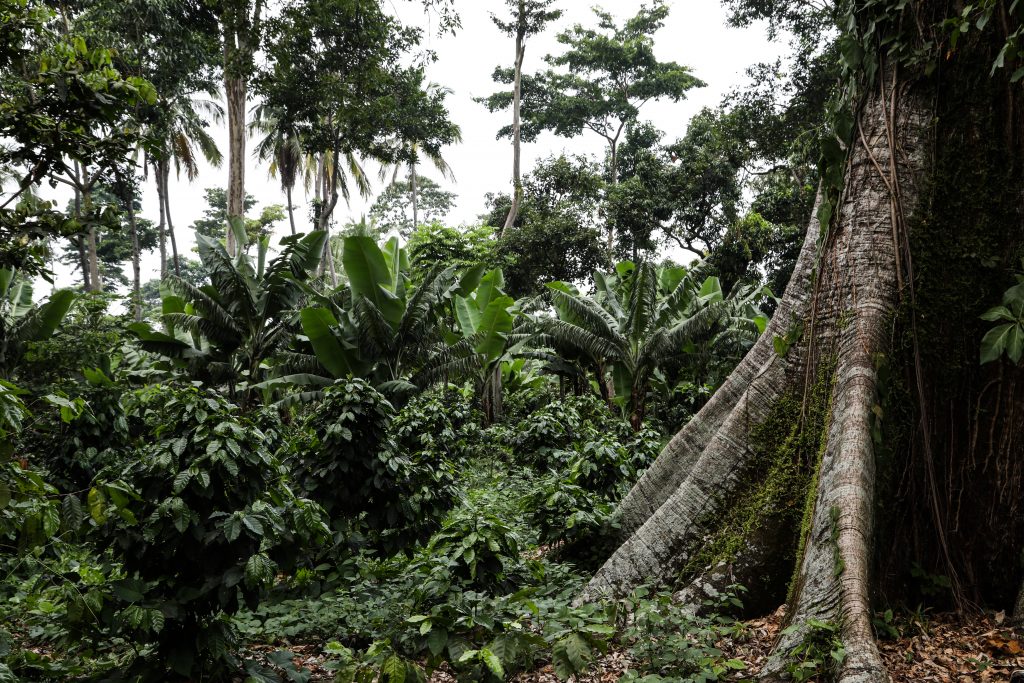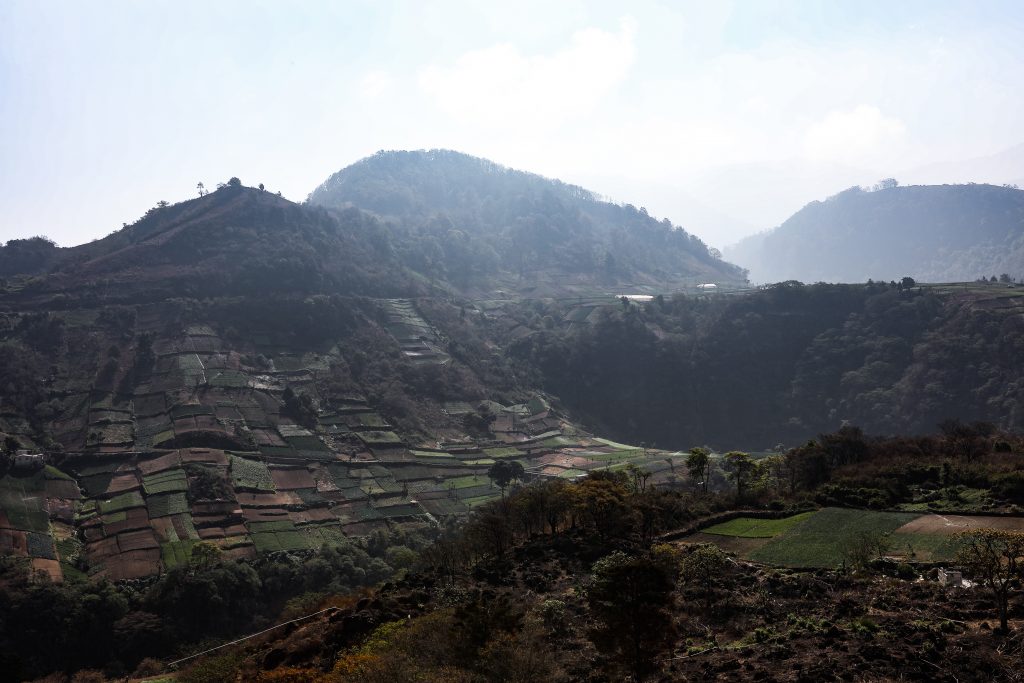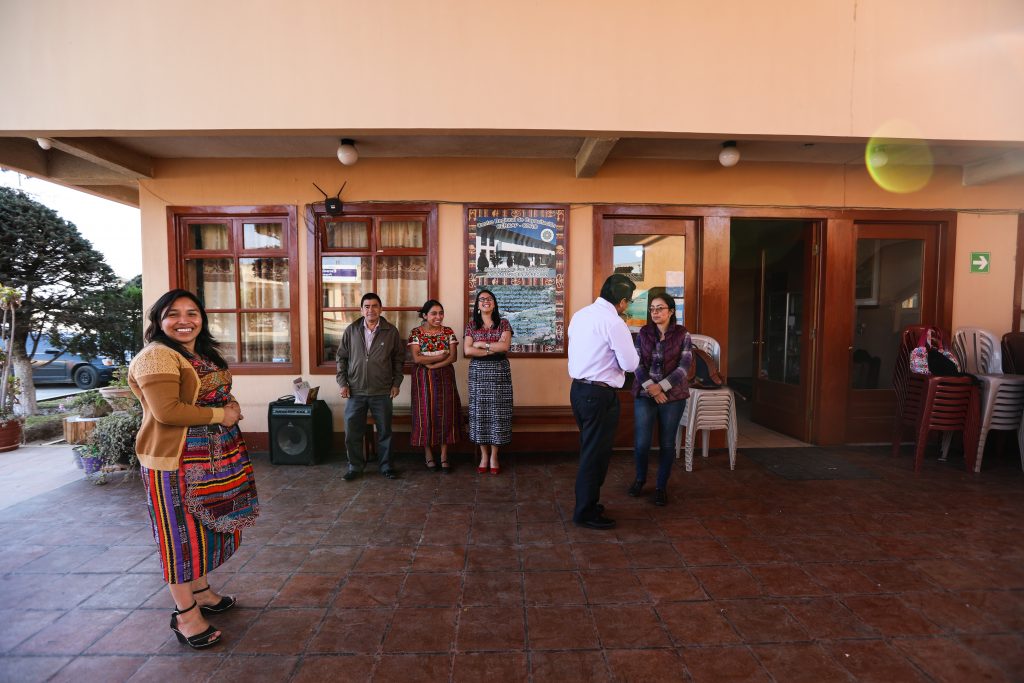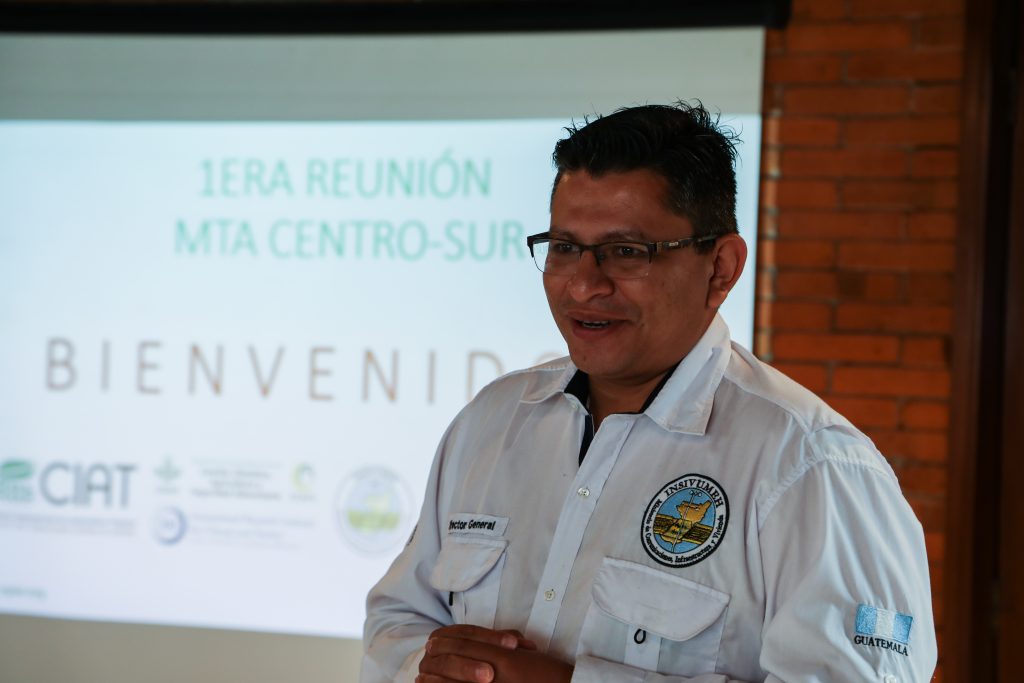Columbia World Projects’ first project, ACToday, aims to combat hunger and improve food security by increasing climate knowledge in six countries that are particularly dependent on agriculture and vulnerable to the effects of climate change and fluctuations: Bangladesh, Colombia, Ethiopia, Senegal, Vietnam and Guatemala. This article takes an in-depth look at a series of roundtables that ACToday, which is led by Columbia’s International Research Institute for Climate and Society (IRI), has launched in Guatemala to advance ACToday’s goals.
Five new roundtables launched this year by ACToday and local partners will give thousands of Guatemalan farmers access to state-of-the-art forecasts and other climate information to help them increase both their crop yields and earnings.
“The hardest part of climate services is not only generating information that wasn’t there before, but how to get that information to communities in a way they understand and can use on the ground,” said Diego Pons, a postdoctoral research scientist at IRI who has been deeply involved in the implementation of the roundtables.
The roundtables aim to bridge the gap between science and the communities who need it in countries like Guatemala where many struggle to eat enough healthy food. Chronic malnutrition rates in Guatemala are the fourth-highest in the world and the highest in Latin America and the Caribbean.
Roundtables are a key component of ACToday’s work in both Guatemala and Colombia as the project uses state-of-the-art forecasting tools to reduce malnutrition and increase sustainable agriculture.
The roundtables—or mesas técnicas agroclimáticas—are made up of experts and decision makers including farmers and farmers associations, representatives from local and national government agencies, and international organizations such as the UN Food and Agriculture Organization. Participants meet regularly to learn about the kind of information that farmers need, as well as to discuss recent climate conditions, the latest forecasts, recommended actions for farmers and strategies for communicating those recommendations beyond the roundtables themselves.
Together, these roundtables will ensure that tens of thousands of smallholder farmers not only have access to important climate information and advisories, including those produced by ACToday, but also have a way to voice their needs and give feedback to Guatemala’s national meteorological agency, which produces such information. ACToday has supported the agency in improving its forecasts through NextGen, a new set of high-quality, flexible and tailored seasonal forecasts. The roundtables have focused, in particular, on incorporating farmers from indigenous communities, who, due to barriers such as language and geography, often face particularly high hurdles in accessing relevant climate information.
Roundtables are a key component of ACToday’s work in both Guatemala and Colombia. Around one million farmers in Guatemala are subsistence farmers, many living in areas vulnerable to climate shocks and without access to irrigation. Even for farmers that have irrigation, severe droughts and floods remain real risks. The roundtables help these farmers obtain access to timely climate information that’s critical to increasing their crop productivity, which in turn improves food security in areas that are struggling.
Climate information can’t prevent droughts and floods from happening, but a better understanding of the past, present and future climate in a farmer’s region can help that farmer make more informed decisions. That’s why a core tenet of the roundtable process is that the development and delivery of climate services has to be done with the participation of people all along the value chain of climate information, including subsistence farmers.
Each roundtable is designed to respond to local needs in different areas of the country. In the highlands of Guatemala, where many farmers subsist on food they grow themselves, for example, a local farmers association has been closely involved with the roundtables. In south-central Guatemala, by contrast, coffee and sugar cane are grown on large farms, which employ seasonal workers paid in cash. In this region, a roundtable partner is the national coffee association, which represents the country’s coffee farmers and works to improve their ability to grow and sell coffee. Regardless of regional variation, the overall goal of each roundtable is the same: to make sure that farmers have the highest quality climate information that’s relevant to their growing decisions.
The roundtables build off of a process first developed in Senegal and Colombia by the International Center for Tropical Agriculture (CIAT), an ACToday partner. ACToday researchers from IRI are leading the development of the new Guatemala roundtables in partnership with local organizations and CIAT. Staff from ACToday play a range of important roles in each roundtable: they co-organize each roundtable’s initial meeting, identify and provide the best climate science to bring to the roundtables, and help attendees strategize on how to communicate climate information more effectively.
Pons said he is encouraged by the positive response to the roundtables so far from local and national institutions. High level officials have attended the launches of the roundtables and actively participated in the events.
“National agencies spend a lot of time and effort to improve their ability to observe and forecast climate and weather changes,” he said. “Often, these advances are either not reaching or not being utilized by the most vulnerable communities, because up until now there hasn’t been a process to facilitate this.” It’s a process that ACToday is putting in place.
“A process of translation is needed and that is where the mesas técnicas agroclimáticas come to serve their purpose. They can bring these products to the regions,” said Juan Pablo Oliva Hernández, the director of Guatemala’s national meteorological agency. “We’re excited that we can have a direct impact on the population. This is something that really gets us up and out of bed every morning.”
More photos of ACToday-Guatemala
For more on ACToday at IRI visit iri.columbia.edu/actoday. All images are by Elisabeth Gawthrop unless otherwise noted.






